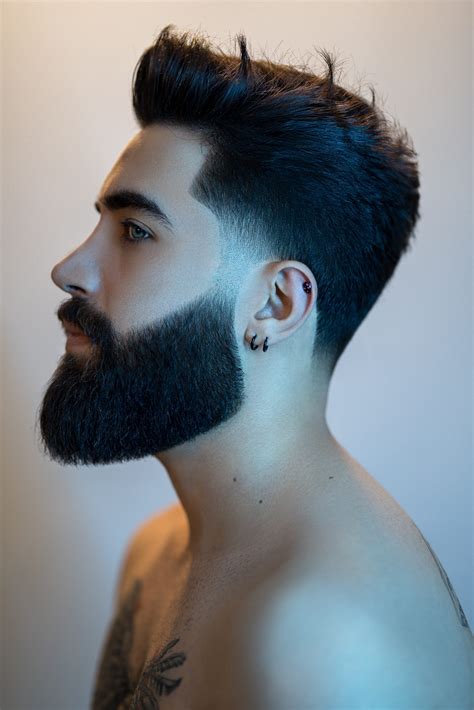Introduction
With the rise of sophisticated grooming routines, hair clipping has become an essential tool for men seeking a sleek, professional, and stylish look. As the popularity of clippers continues to soar, the availability of advanced models with versatile features empower individuals to achieve their desired hairstyles in the comfort of their own homes.

Market Analysis
According to the global hair clippers market report by Allied Market Research, the industry is projected to reach $2.9 billion by 2027, exhibiting a compound annual growth rate (CAGR) of 3.8% from 2020 to 2027. Factors driving this growth include the increasing preference for home grooming, rising consumer awareness of personal care, and the emergence of innovative hair clipping technologies.
Pain Points and Motivations
Men face several pain points when it comes to hair clipping:
- Inconsistent results: Manual clippers often yield uneven and unprofessional-looking cuts.
- Time-consuming process: Clipping hair can be a tedious and time-consuming task.
- Lack of confidence: Dealing with complex clippers and attachments can intimidate and discourage beginners.
Motivations for hair clipping include:
- Improved appearance: A well-trimmed hairstyle boosts self-confidence and makes a polished impression.
- Convenience: Home clipping eliminates the need for frequent visits to barbershops, saving time and money.
- Control over style: Clippers empower men to customize their hairstyles precisely to their liking.
Effective Strategies to Enhance Hair Clipping
To achieve effortless and professional-looking results, consider the following effective strategies:
- Invest in a high-quality clipper: Look for clippers with durable blades, ergonomic designs, and adjustable settings to suit different hair types and lengths.
- Choose the right attachments: Different attachments are designed for various hair lengths and styles. Experiment with attachments to find the perfect length for your desired look.
- Practice on mannequins or friends: Before experimenting on your own hair, practice clipping techniques on mannequins or friends to gain confidence and precision.
- Always comb your hair before clipping: Combing your hair removes tangles and ensures even cutting, preventing snags and accidents.
- Avoid rushing the process: Take your time to carefully section and clip your hair, paying attention to detail and blending for a natural finish.
Step-by-Step Approach to Hair Clipping
Follow this step-by-step approach to achieve a professional-looking hair cut at home:
- Wash and comb your hair: Wash your hair thoroughly to remove any products or dirt. Comb your hair to detangle and remove any knots.
- Choose the appropriate attachments: Select the attachments that correspond to your desired hair length.
- Section your hair: Divide your hair into sections to make the clipping process easier to manage.
- Start clipping: Hold the clipper parallel to your scalp and move it in smooth, even strokes.
- Blend and taper: Use different attachments to blend and taper the edges of your hair, creating a natural and polished look.
- Check and adjust: Regularly check your progress and adjust the clipper settings or attachments as needed.
- Finish and style: After clipping, finish by styling your hair with your preferred products to achieve the desired look.
Innovative Hair Clipping Technologies
The hair clipping industry is constantly evolving with the introduction of innovative technologies:
- Self-sharpening blades: Advanced clippers feature self-sharpening blades that maintain a sharp cutting edge for extended periods, reducing the need for frequent blade replacements.
- Cordless and rechargeable: Cordless and rechargeable clippers provide greater freedom and convenience, allowing users to clip their hair anywhere, anytime.
- Smart features: Some clippers come equipped with smart features such as LED displays, adjustable speeds, and memory settings to enhance the user experience.
Creative Applications of Hair Clipping
Beyond traditional hair cutting, hair clipping can be employed in numerous creative applications:
- Beard and mustache shaping: Clippers can be used to shape and style beards, mustaches, and sideburns with precision.
- Art and design: Clippers can be used to create intricate designs and patterns in hair, showcasing creativity and artistic expression.
- Pet grooming: Clippers can be adapted to safely trim the hair of pets, ensuring their comfort and hygiene.
Tables to Enhance Understanding
Table 1: Common Hair Clipper Blade Sizes
| Blade Size | Hair Length |
|---|---|
| No. 0 | 1/16 inch (1.5 mm) |
| No. 1 | 1/8 inch (3 mm) |
| No. 2 | 1/4 inch (6 mm) |
| No. 3 | 3/8 inch (9 mm) |
| No. 4 | 1/2 inch (12 mm) |
Table 2: Clipper Maintenance Tips
| Task | Frequency |
|---|---|
| Clean clippers with a brush or compressed air | After each use |
| Oil blades with clipper oil | Every 2-3 uses |
| Disinfect blades with rubbing alcohol | Monthly |
Table 3: Hair Clipping Styles for Different Hair Types
| Hair Type | Recommended Blade Size |
|---|---|
| Thin hair | Use shorter blade sizes (No. 0-2) with caution |
| Thick hair | Use larger blade sizes (No. 2-4) for efficient cutting |
| Curly hair | Use longer blade sizes (No. 3-4) and comb through hair often |
Table 4: Troubleshooting Common Hair Clipping Problems
| Problem | Possible Cause | Solution |
|---|---|---|
| Uneven cuts | Dull blades or incorrect attachment size | Sharpen or replace blades; use appropriate attachments |
| Clippers not cutting | Clogged blades or low battery | Clean blades thoroughly; charge or replace battery |
| Hair pulling | Sharp blade edges or incorrect combing | Use blunt-edged blades; comb hair thoroughly |
